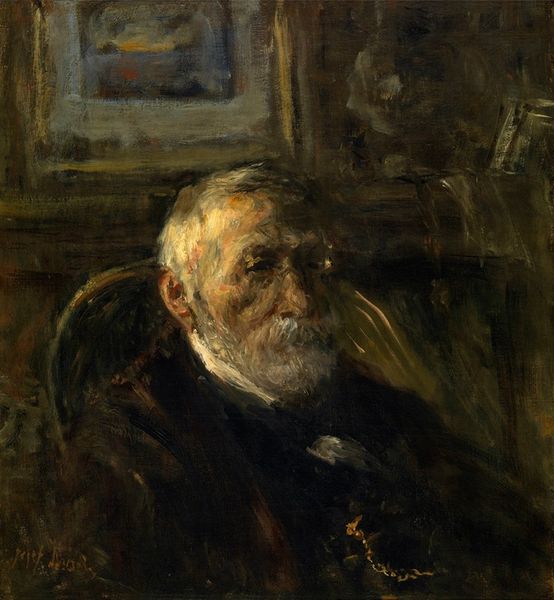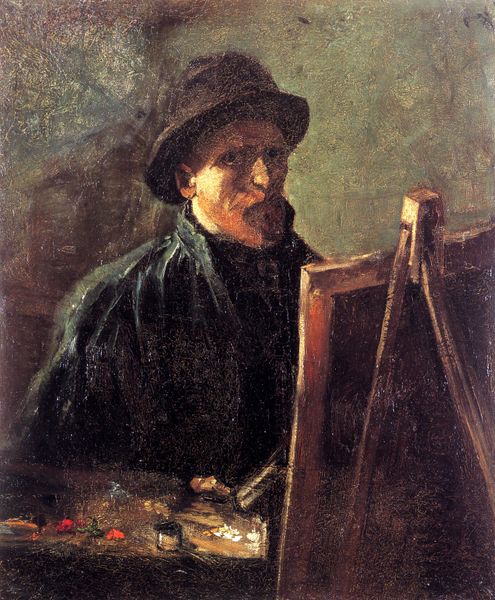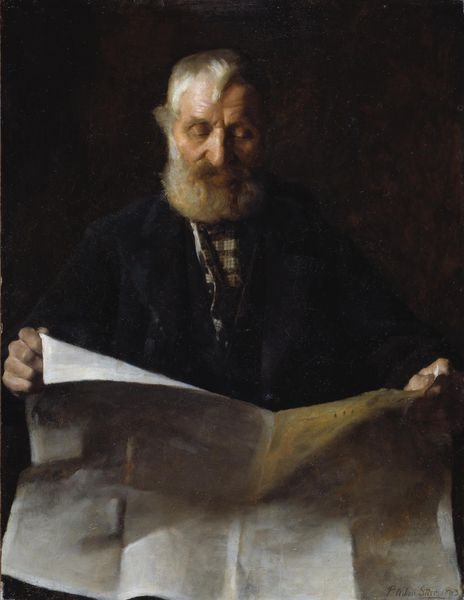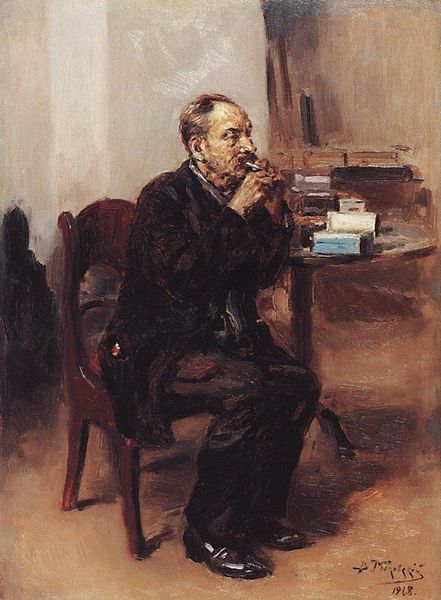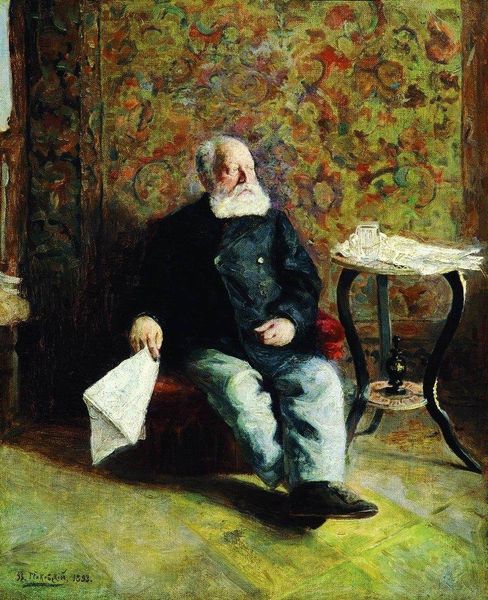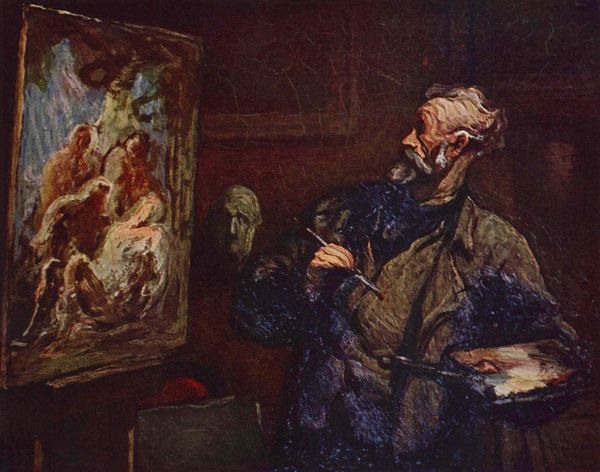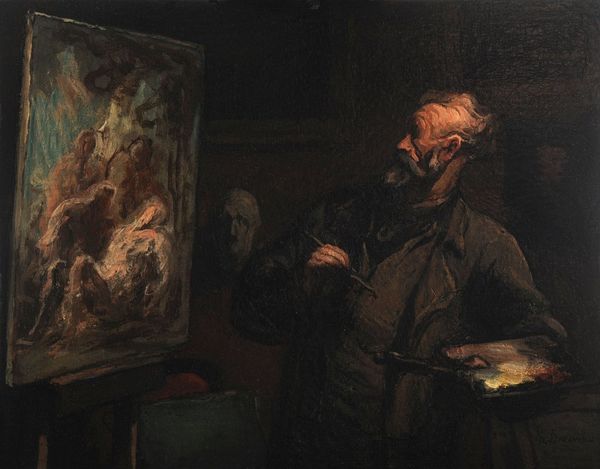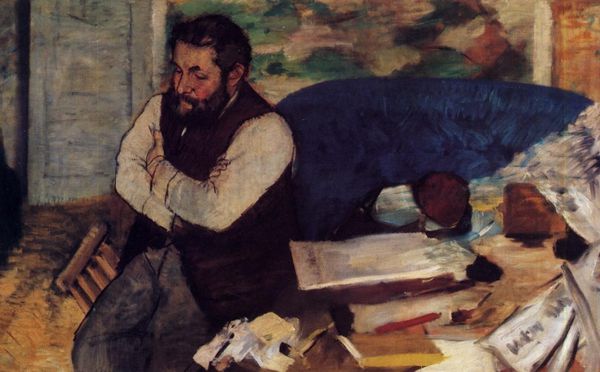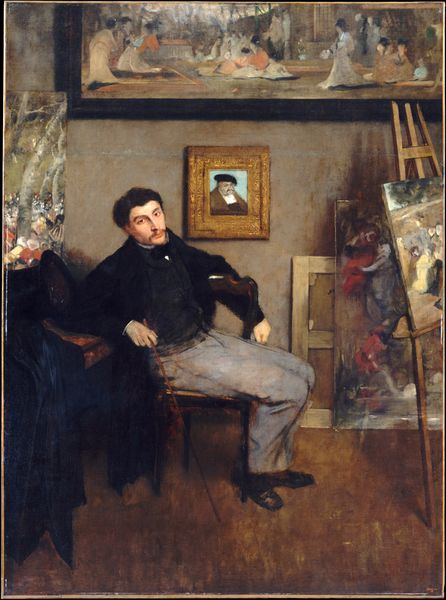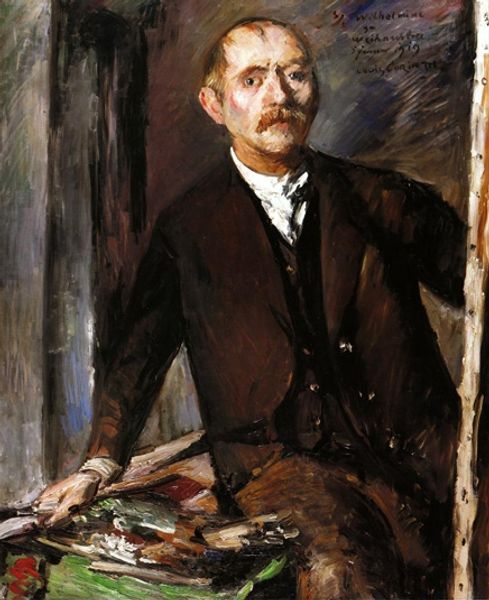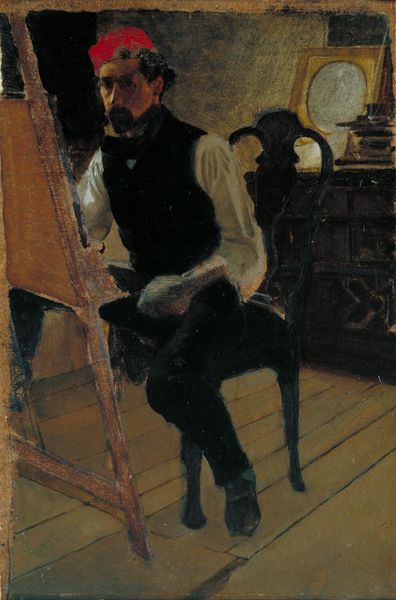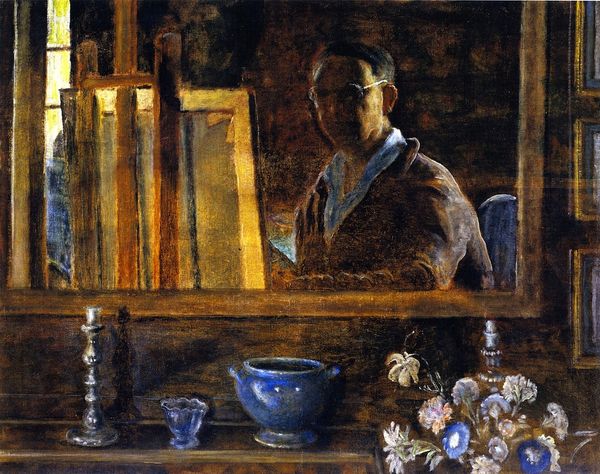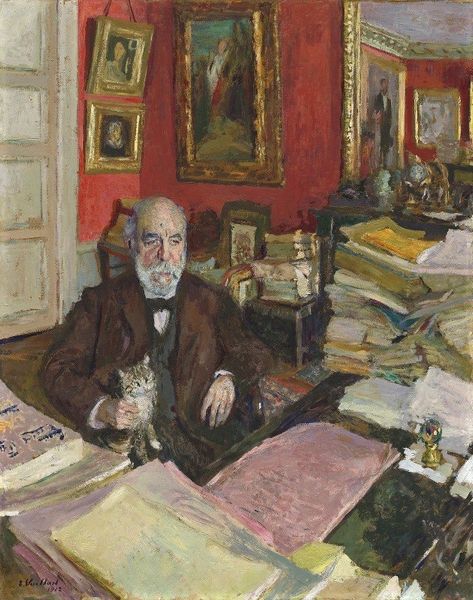
Copyright: Public domain
Editor: We're looking at William Merritt Chase's "Self Portrait," painted in 1916. The texture practically vibrates off the canvas. He’s surrounded by his studio, all these intriguing blurs. What story do you think Chase is telling us here? Curator: A story? I feel like he’s less *telling* and more *showing* us the quiet hum of creativity itself. The open canvas is pregnant with potential, don't you think? And he’s placed himself right there, the orchestrator, slightly rumpled, utterly in command. I wonder, do you find it a little self-aggrandizing? Editor: A bit, maybe. But I also see vulnerability, with his tools displayed so openly, and his intense gaze like he’s judging his own worth, brushstrokes and all. It’s not the showy confidence I’d expect from a turn-of-the-century artist. Curator: Ah, but isn't that what makes it delicious? This tug-of-war between mastery and doubt? Notice how the soft, almost blurry edges of everything melt together, drawing the eye to his own unwavering stare. What’s that gaze say to you? Is he inviting us in, or daring us to question his vision? Editor: Daring us, definitely! And the painting feels incredibly current even today, with artists constantly wrestling with self-promotion and artistic vision. It also seems to be implying, "I am painting and my studio is art". Curator: Precisely! He’s inviting us into the creative sanctum, to witness not just the finished product but the messy, beautiful process itself. Do you now see how much is at stake, with himself as subject *and* judge? Editor: I do. It feels like Chase is not just painting a portrait, but painting the act of creating, self-assessing, and everything that that means. Curator: What a gift it is to look in the mirror, create, and make visible all the complexity that may dwell inside.
Comments
No comments
Be the first to comment and join the conversation on the ultimate creative platform.
